‘The Art of the Winds’
An exhibition of American weathervanes at the American Folk Art Museum is the first comprehensive collection of its kind
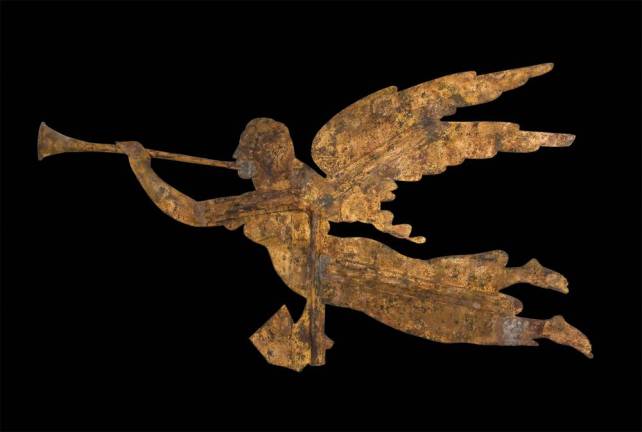
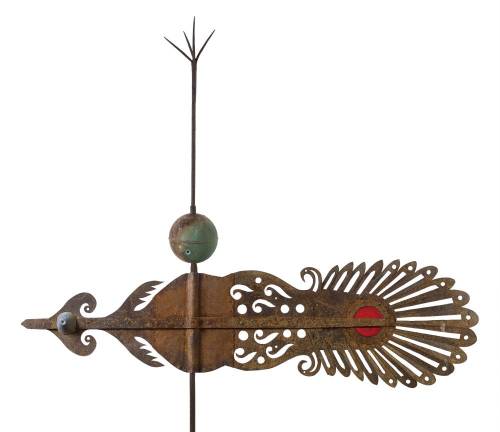
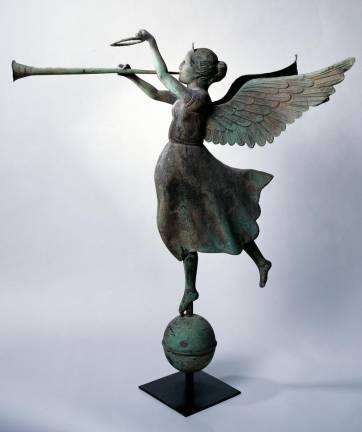
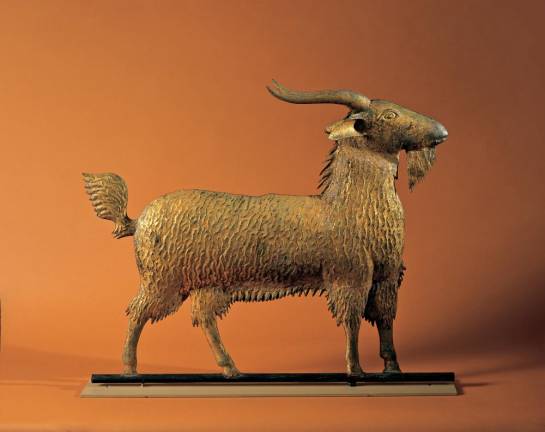
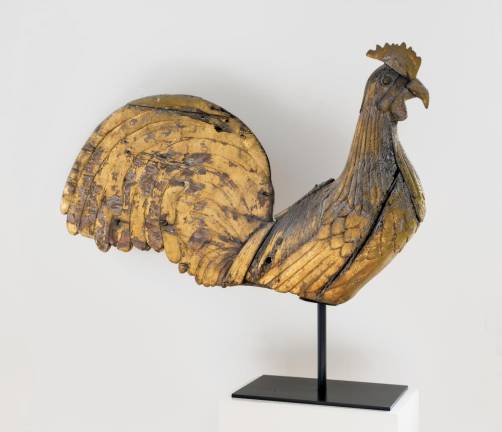

There has been a burst of spontaneous creativity from a year of pause and reflection – unexpected crafts and paintings and fashion and evolving sculptures – from friends, relatives, and neighbors, seeking ways to express still-processing emotions and new-found interests. Folk art.
“It is what I like to call ‘the art of the everyday,’” said Emelie Gevalt, folk art curator at the American Folk Art Museum on the Upper West Side, regarding her life-long interest in the history of domestic interiors including folk art, weathervanes and related categories. “Creativity and art can come from anywhere [and anyone] can make and appreciate creative objects” such as the ones displayed in their current exhibition.
“American Weathervanes: The Art of the Winds” exhibition opened at the museum on its 60th anniversary just over two weeks ago. It is presented as the first comprehensive collection of its type in more than four decades to “highlight the beauty, technical virtuosity, and cultural significance of American vanes fashioned between the late eighteenth century and early twentieth centuries.” The exhibition is accompanied by a full-color, over 200-page, hardcover book of the same name written by Robert Shaw, guest curator, an expert in the field of folk art.
Gevalt, the coordinating curator of the exhibition, believes Shaw’s in-depth research represents what will be an influential foundation for the field for many years to come and is truly welcomed because “until now, there really hasn’t been an authoritative, scholarly text on the history of weathervanes.”
While many may know that weathervanes, crafted instruments placed usually at the highest points on top of buildings to show the direction of the wind, were once extremely popular throughout the American landscape (some still adorn the tops of buildings today), the history and craftmanship of these objects are fascinating to uncover. It is Gevalt’s hope that in visiting the show, viewers will experience the “delightful surprise” of this distinctive art form.
Gevalt shared additional thoughts about the history of weathervanes and the future of folk art with newly emerging sub-categories and academic attention.
On the show:
“We’re especially excited to be celebrating our anniversary with this show because weathervanes have been part of the Museum’s history from the beginning. One of our earliest shows was a weathervane show, and the history of collecting folk art is connected to weathervanes in some important ways as well: It was one of the first forms of early Americana that caught the eye of folk-art collectors who were interested in that material in the early 20th century.
“There are multiple points of entry for everyone, from someone who is an expert in weathervanes or folk art; for someone who doesn’t have a background in looking at these objects at all. It’s a family friendly show, children will appreciate the animals [displayed] in multiple forms. There are so many levels to appreciate these objects – from a historical perspective; from a history of craftmanship perspective, social history, a scientific element.”
On the history of folk art:
“The folk-art-collecting movement really developed in the early 20th century and the Americana-antique collecting movement as well. One of the reasons for that was the new-found freedom of the automobile and people were able to actually venture into the countryside, and they would go around knocking on the doors of houses that look promising and asking the residents if they had any old things to sell.
“The field has now absolutely been established for many years, of course, and one of the things I think is wonderful about the field we call folk art is that it does encompass a really wide range of very specific sub-categories, like weathervanes, which we really consider to be in their own realm.”
On the artistic importance of weathervanes:
“Weathervanes have been aesthetic objects from the very beginning. They are tools, ostensibly, but the reality is that, as [Robert Shaw] said in the book, any farmer [at the time] would know which way the wind is blowing. Throughout its history, this is an object that took on particular forms [farm animals, trains, religious images] that really spoke about people’s sources of pride in their work, their social status and they collected weathervanes that resonated with them for these particular reasons.”
On the future of folk art:
“Folk art is really meant to make space for any art form that was being left outside of the art history canon; an acknowledgement of a certain aesthetic; the beauty of these objects that were made in the craftmanship or artisanal traditions.
“I think it is an auspicious moment for folk art. I would say the academic field of Americana art is becoming more expansive and embracing objects that might previously have been considered outside the field of study. And it is to [Shaw’s] credit that he has done a wonderful job with the book that accompanies the exhibition. It is a beautiful book that I think will be a seminal text for scholars in the future.”
What she hopes visitors will do on leaving the show:
“We’re hoping to encourage visitors to look up. That when you attune your eyes to this, you can find moments of beauty and moments of pause to appreciate our aesthetics surrounding objects like this.”
“American Weathervanes: The Art of the Winds” is on view until January 2 at the American Folk Art Museum, 2 Lincoln Sq., Columbus Ave. at West 65th St.